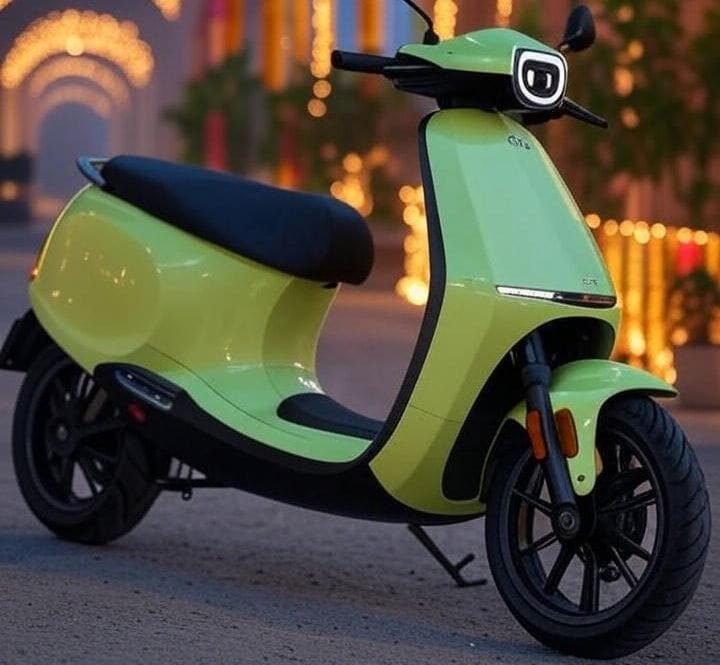Bengaluru, August 19, 2025 – Ola Electric, India’s leading electric two-wheeler manufacturer, has unveiled a groundbreaking development in its pursuit of sustainable mobility. The company announced that its scooters and motorcycles will now be powered by its indigenously developed 4680 Bharat Cell battery, produced at its Tamil Nadu Gigafactory. This move marks a significant step toward reducing dependency on imported components and lowering production costs, with the benefits being passed on to consumers through substantial price reductions across its vehicle lineup.
In-House Battery Technology: A Game-Changer
At its annual Sankalp 2025 event, Ola Electric showcased the 4680 Bharat Cell, a lithium-ion battery designed and manufactured entirely in India. According to Bhavish Aggarwal, Founder and Managing Director of Ola Electric, the Gigafactory is now fully operational, with the first batch of 4680 cells set to power Ola’s top-end scooters and motorcycles by Navratri this quarter. These advanced cells boast a 15-year lifespan and can achieve an 80% charge in just 15 minutes, offering superior efficiency and performance compared to conventional batteries.
The integration of in-house batteries is expected to cut battery costs by up to 50%, enabling Ola to produce more affordable electric vehicles (EVs) without compromising on quality. The 4680 cells will be featured in premium models like the Ola S1 Pro Plus and the Roadster X Plus, enhancing their range and performance. For instance, the S1 Pro Plus now delivers an impressive 320 km range and a top speed of 141 km/h, while the Roadster X Plus offers robust performance for urban and inter-city travel.
Price Reductions to Boost EV Adoption
To make electric mobility more accessible, Ola Electric has announced significant price cuts across its S1 scooter portfolio and the newly launched Roadster motorcycle series. The price reductions, effective immediately, are designed to capitalize on the festive season and drive EV adoption, particularly in Tier-II and Tier-III markets.
Key price reductions include:
- Ola S1 X (2 kWh): Now priced at ₹74,999, down from previous levels, making it one of the most affordable electric scooters in India.
- Ola S1 X (3 kWh): Reduced to ₹87,999, offering a balance of range and affordability.
- Ola S1 X (4 kWh): Priced at ₹101,999, catering to consumers seeking longer-range options.
- Ola S1 Pro: Now available at ₹1,34,999, a notable drop to make the premium model more accessible.
- Ola S1 Pro Plus: Launched at an introductory price of ₹1,49,999, down from ₹1,70,000, featuring the new 4680 battery and advanced features like dual ABS and AI-powered MoveOS 6.
- Ola Roadster X (2.5 kWh): Starting at ₹74,999, positioning it as a competitive entry-level electric motorcycle.
- Ola Roadster Pro: Priced at ₹1,99,999, offering cutting-edge performance for enthusiasts.
These price cuts follow earlier reductions in 2024, where Ola slashed prices by up to ₹25,000 on select models like the S1 X, S1 Air, and S1 Pro. The company’s ability to lower costs stems from economies of scale, improved engineering, and the use of in-house batteries, which reduce reliance on expensive imported cells from suppliers like LG Energy Solution and CATL.
Strategic Vision for India’s EV Future
Ola Electric’s shift to in-house battery production aligns with its broader vision of making India a global hub for electric mobility. The Tamil Nadu Gigafactory, currently operating at a capacity of 1.49 GWh, is set to scale up to 5 GWh and eventually reach 100 GWh, positioning Ola as a leader in battery manufacturing. This move not only strengthens India’s EV ecosystem but also reduces the environmental and economic costs associated with importing critical components.
“We’re breaking barriers to make electric vehicles affordable for every Indian,” said Bhavish Aggarwal in a statement. “Our in-house 4680 Bharat Cell is a testament to India’s innovation, and by integrating it into our scooters and bikes, we’re delivering unmatched value to our customers.”
The company also introduced its Gen 3 platform, featuring a mid-drive motor, chain drive, and brake-by-wire technology, which enhances energy recovery by 15% and boosts range by 20% compared to previous generations. These advancements, combined with price reductions, aim to make Ola’s EVs a compelling alternative to traditional petrol-powered vehicles.
Market Impact and Consumer Response
Ola Electric continues to dominate India’s electric two-wheeler market, holding a 30% share as of 2024. The company registered 41,605 units in October 2024, a 74% year-on-year growth, driven by strong festive demand and an expanded sales network. With the new price structure, Ola aims to sustain this momentum and capture a larger share of the mass market.
Consumer response has been largely positive, with many praising the affordability and advanced features of Ola’s vehicles. For instance, the Ola Gig, priced at ₹39,999, has become a popular choice for delivery agents due to its low running cost of ₹0.13 per km and a 112 km range. However, some customers have raised concerns about after-sales service and battery durability, issues Ola is addressing by expanding its service network and offering an 8-year/80,000 km battery warranty at no additional cost.
Looking Ahead
Ola Electric’s integration of in-house 4680 battery cells and its aggressive price reduction strategy signal a bold step toward democratizing electric mobility in India. The company’s focus on innovation, affordability, and local manufacturing is expected to intensify competition in the EV market, challenging rivals like TVS Motor and Bajaj Auto. With plans to launch additional electric motorcycle variants in 2025 and a futuristic Diamondhead superbike by 2027, Ola is poised to redefine the future of two-wheeler transportation in India.
As the festive season approaches, Ola’s latest offerings are set to attract a diverse range of consumers, from budget-conscious commuters to performance-driven enthusiasts, cementing its position as a trailblazer in India’s electric vehicle revolution.
Sources: Ola Electric official announcements, industry reports, and market analysis.



Average Rating